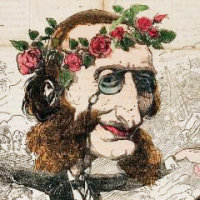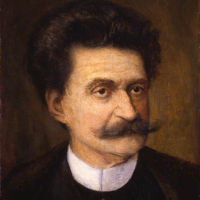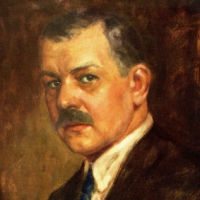| Handout (flat) Handout (folded) Class Script | Return to Index |
Q AND A
What would a performer have been paid in the early days of Broadway?
Details are not easily available. Before 1919, the scale and rules for compensation was entirely at the discretion of individual promoters, who paid as little as they could get away with. The Broadway strike of 1919 led to the creation of Actors' Equity—and also the separate Chorus Equity, later folded into one organization. Marie Dressler, the founder of the latter, was making $8/week as a chorus girl at the time: about $250 in today's dollar, but with no rules for rehearsal pay, extra services, or overtime. The standard pay for a Broadway chorus performer today is $2,465/week, with numerous guarantees about working conditions.
In Vienna around 1900, was there a firewall between the performers of opera and operetta?
This is a hard one to answer. Nineteenth-century operetta basically came about as an enhancement of the spoken theater, so its performers would be actors who also sang (as indeed on Broadway today). As dance grew as a significant ingredient, so dance ability would play a greater part than operatic vocal skills. However, the classic Viennese operetta offered romantic characters and melodies that attracted major opera stars like Richard Tauber, and crossover casting was not uncommon in major roles. This would be much less the case with supporting and ensemble roles. I do not know of historical examples of the opposite: when a well-known operetta singer would be engaged in a role of similar size in opera. But this is beginning to happen today in an attempt to make opera attractive to a wider public; the Broadway star Kelli O'Hara, for instance, whom we saw as Valencienne in The Merry Widow today, is a frequent guest performer at the Met.
"That reminded me of XYZ; could one composer have been influenced by the other?"
Very likely. However the Broadway musical, even more than opera, and certainly more than the spoken theater, quickly developed its own repertoire of standard tropes, musical forms, and textures. So a composer or lyricist might deliberately evoke an earlier type of number, knowing that the reference would be recognized, and that the family connection would be part of the effect, ironical or otherwise. I will deal with this in more detail later in the course.
VIDEO LINKS
YouTube is only partially helpful in reviewing today's class: while two of the productions shown are indeed available complete, the other two can be sampled with trailers or excerpts only. For La vie Parisienne, I have three very short teasers of the Christian Lacroix production we watched, but the updated Laurent Pelly production that I mentioned is complete; I have cued it to the equivalent of the excerpts played in class. For HMS Pinafore, I have the Stratford Ontario production we saw plus another more authentic one from the old D'Oyly Carte company itself; both are complete, but cued to the two excerpts we saw; neither has titles. The Vienna production of Die Fledermaus is complete, with titles; I have cued it to the Act II finale. The Met Merry Widow is not complete, but the numerous short clips cover most of what we saw.
*Asterisks indicate clips not shown in class.
| LA VIE PARISIENNE | |||
| Christian Lacroix, Paris 2022 |
* Excerpt
(shown in class, but not these excerpts) * Teaser 1 * Teaser 2 |
||
| Laurent Pelly, Lyon 2008 |
* Brazilian's entrance
(production is complete) * Finale |
||
| HMS PINAFORE | |||
| Stratford Ontario, 1981 |
* Sir Joseph's entrance * Act II trio |
||
| D'Oyly Carte, 1973 |
* Sir Joseph's entrance * Act II trio |
||
| DIE FLEDERMAUS | |||
| Vienna, 1971 | * Act II finale (production is complete) | ||
| THE MERRY WIDOW | |||
| Met, 2015 |
* Act II, Vilja song
(Susan Graham, not Renée Fleming) * Act II, ensemble about women * Act II, Hanna/Danilo duet * Act II finale (excerpt) * Act III Grisette scene |
||

















